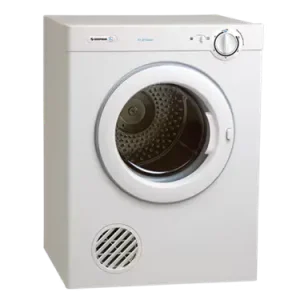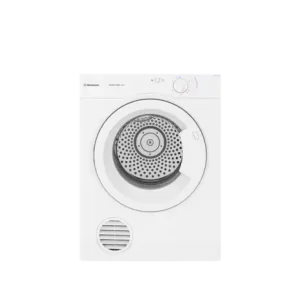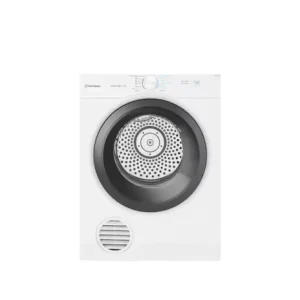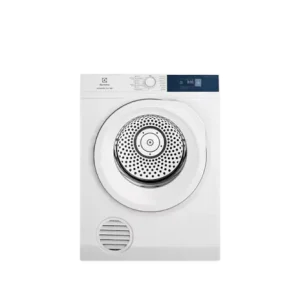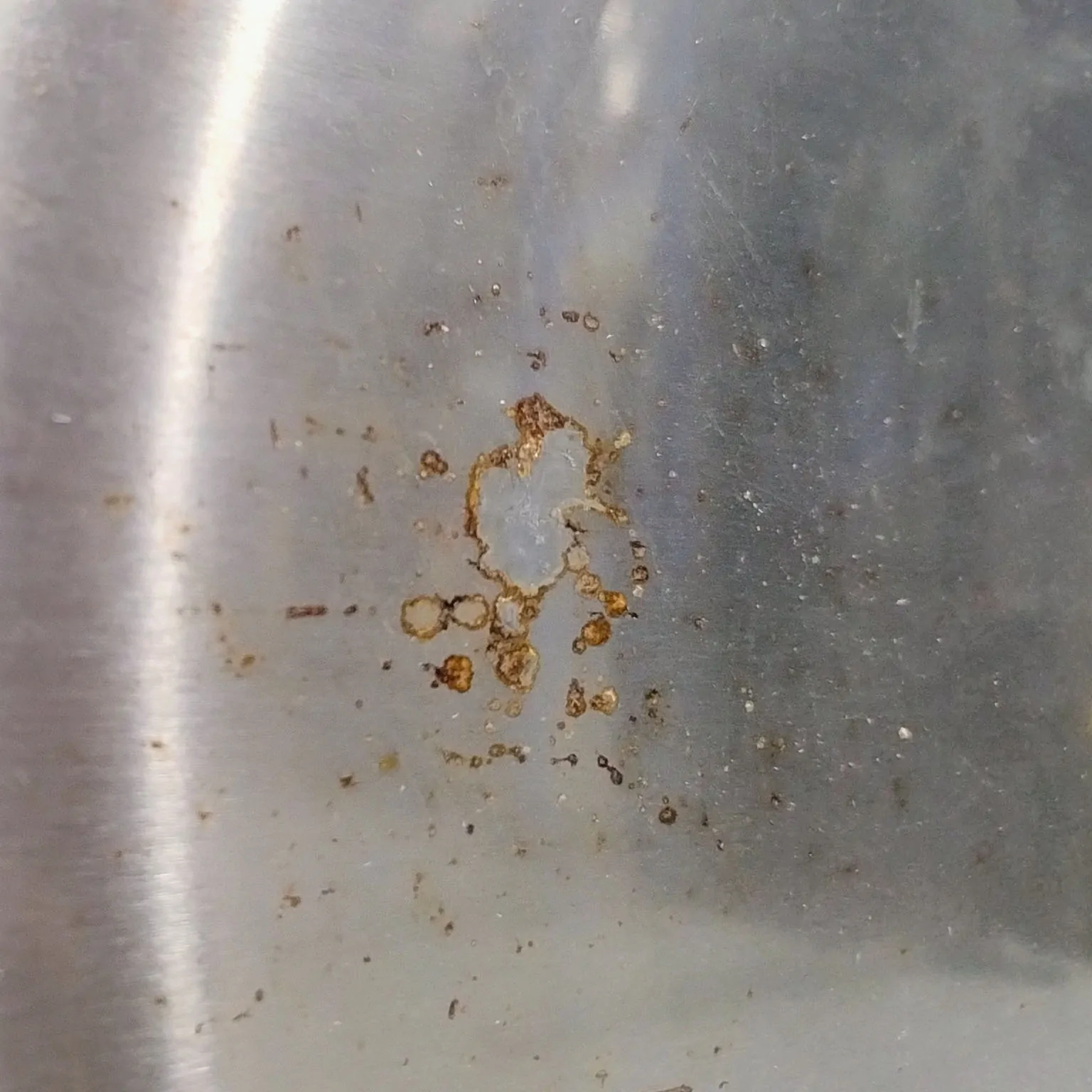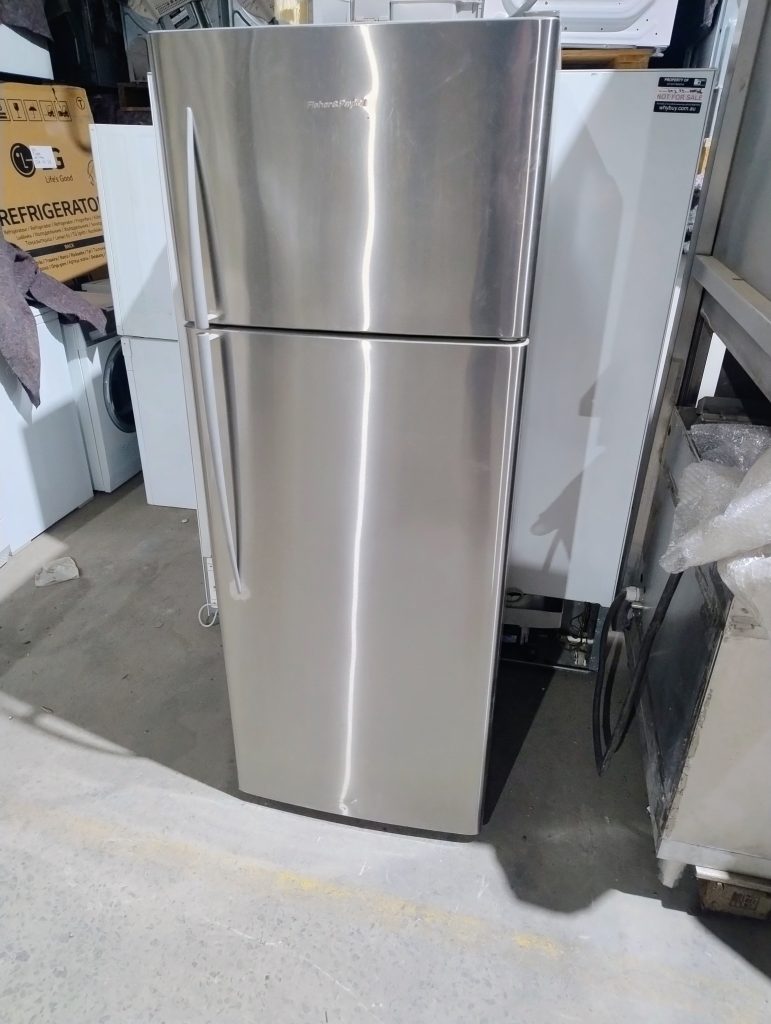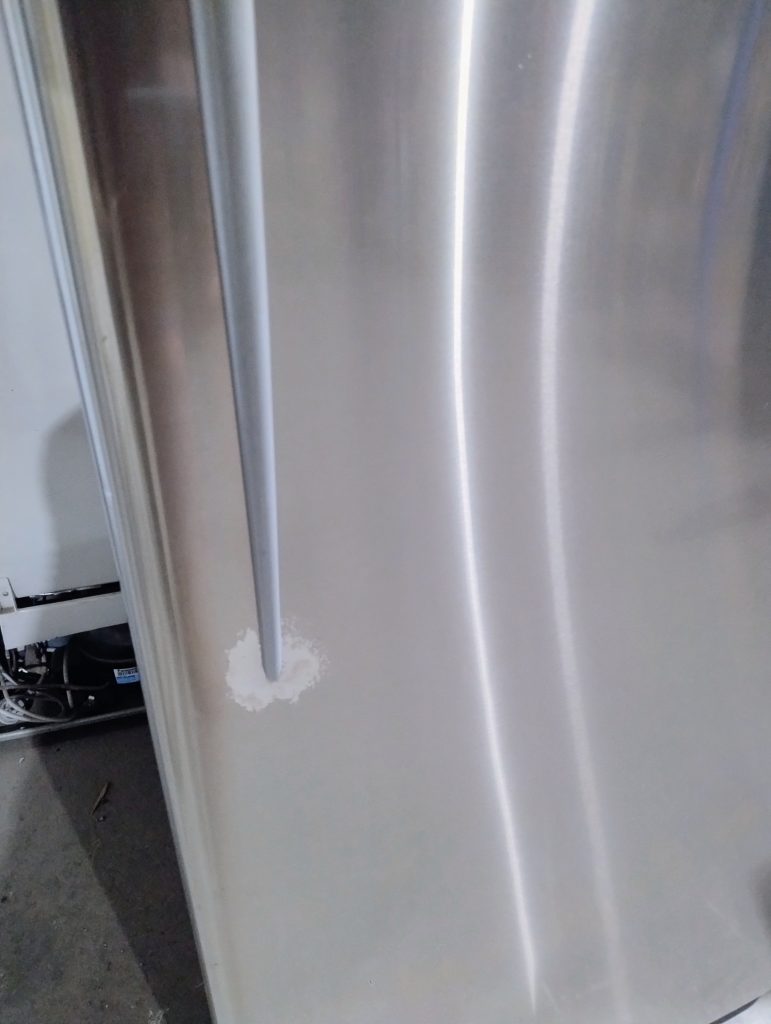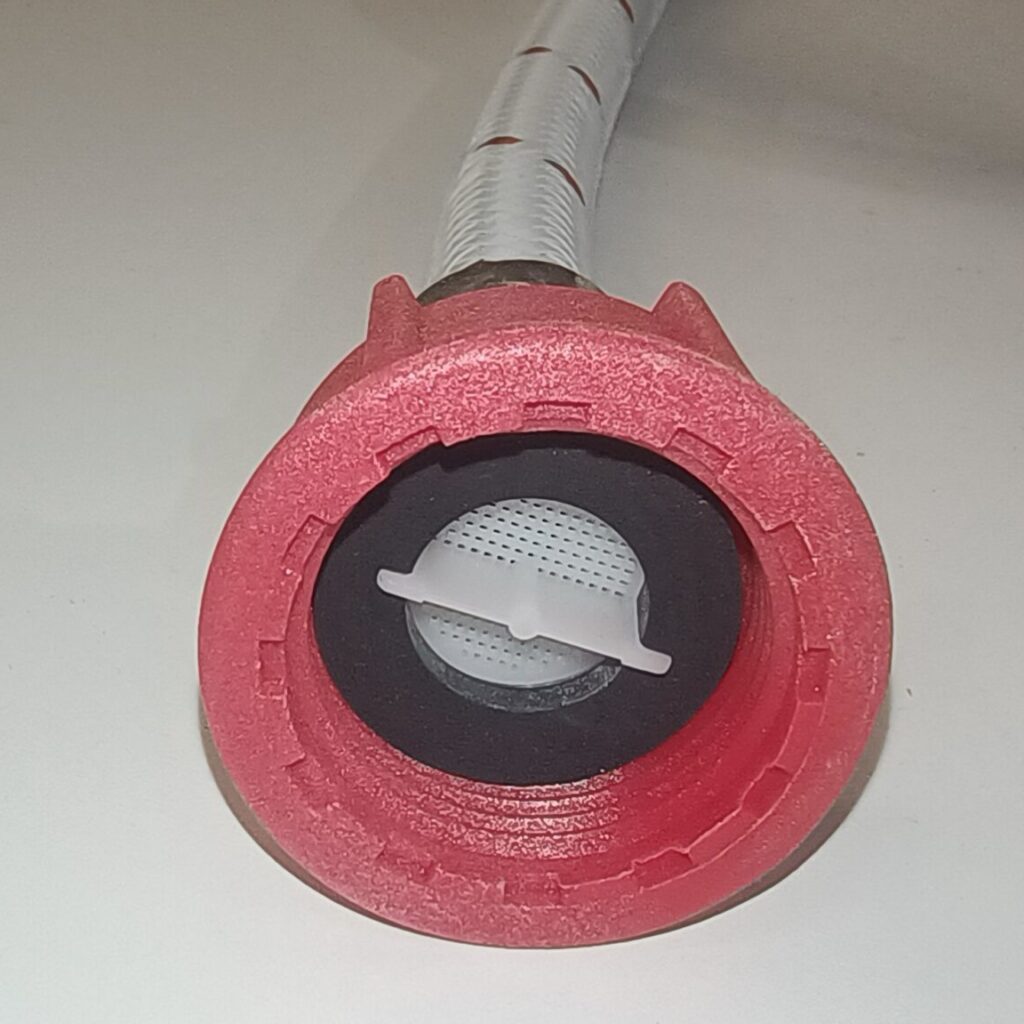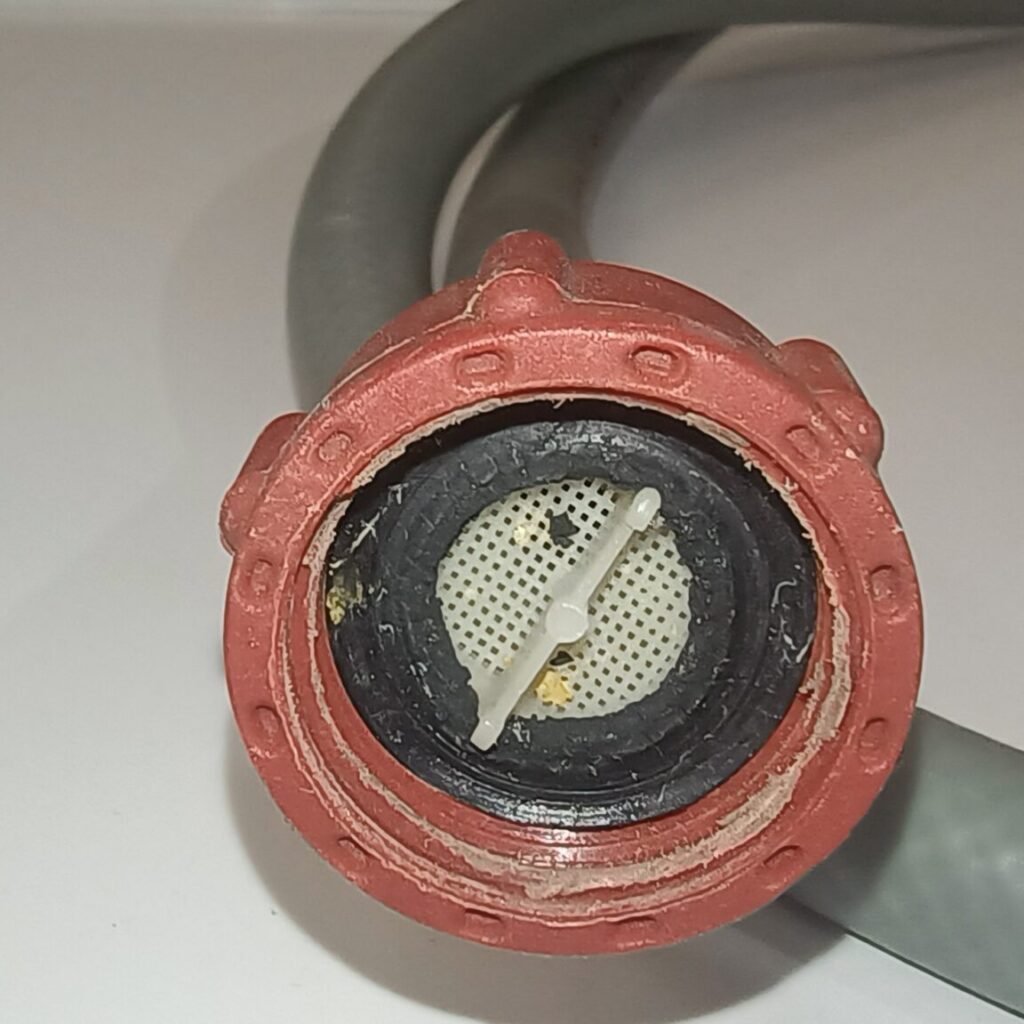
If your washing machine shows Error 37, it usually means it isn’t draining properly. In most cases, the cause is a blocked drain pump, not a failed one. The quickest way to sort this is to watch our short video guide below. The written guide further down is just here if you’d like extra detail. Most of the time customers can fix this themselves in a few minutes. If it doesn’t work for you, or you’d rather leave it to us, that’s fine too – we can arrange a service visit, just email [email protected] from the email address associated with your subscription to open a support ticket.
Step 1 - Drain the Water Safely
Method A - Use the little black drain hose (preferred, when it works)
- Open the filter flap at the bottom right of the washer using a butter knife or flat head screwdriver in the slot.
- Find the small black hose with a cap to the left of the circular filter.
- Pull the hose down/out – it’s kinked inside the machine, and straightening it lets water flow. A gentle tug is required. Some force, but not too much.
- Take off the cap and direct the water into:
- a nearby floor drain,
- 3–5 towels, or
- A very shallow container swapped out as it fills.
- Recap the hose when it slows to drips.
Note: Sometimes the hose simply won’t work properly – often its too fiddly and nothing comes out at all. If that happens, switch to Method B.
Method B – Crack the filter open slightly (works even if the hose doesn’t)
- Slowly turn the filter counter clockwise until water seeps out. It may be hard to turn initially.
- Control the flow with towels, or a floor drain. The shallow tray won’t work here.
Be careful – if you turn the filter too far, the water can surge out uncontrollably. And if debris is stuck in the filter thread, it may not screw back in until cleared.
Step 2 - Remove Your Laundry
Once the water has been drained, turn the machine back on. The door lock will automatically disengage, and you can take your clothes out.
Step 3 - Check the Drain Pump Filter
Once the machine is drained and your laundry is out, check the drain pump filter. A blockage here is the most common cause of Error 37.
How to Check and Clean the Drain Pump
- Unscrew and pull the filter out completely.
- Inspect and clean the filter itself.
- Use an old toothbrush if you have one, otherwise a cloth works.
- Rinse it under a tap.
- Pay special attention to the rubber seal around the filter – clean it so it seals properly when reinstalled.
- Look inside the filter cavity.
- At the very back you’ll see a small four-bladed propeller (a little cross). This is part of the drain pump.
- Shine a torch in if you need to.
What to Look For
Items in the filter are less likely to be the issue than items found remaining in the filter housing. Common items you’ll find:
- Hair ties – very common, and often wrap around the propellor shaft behind the little propeller at the back.
- Band Aids – Occassionally a bandaid in the wrong spot will cause issues.
- Hairpins – are a best case scenario, easy to remove.
- Aglets – the tips of drawstrings, especially metal ones, often wedge deep in the pump and most times you won’t even be able to see it. Usually accompanied by a very broken noise when the washing machine is attempting to drain.
- Coins and nails – they turn up often but rarely cause a blockage unless in extreme volumes. If you pull more than $10 out of the machine, that’s the blockage.
Step 4 - Run a Test Cycle
Once everything’s drained and the filter’s been checked:
- Line up the two locator tabs at the top and bottom of the filter with the slots at the top and bottom of the housing and push the filter in.
- Screw the filter back in applying firm pressure and turing clockwise. The filter will stop turning when the line on its front is vertical. At that point a stop prevents overtightening.
- If you find that once you’ve started screwing the filter in, it becomes very hard to keep turning before it reaches the vertical stop, the rubber seal may be pinching. Sometimes adjusting the seal is enough, but in some cases it may need replacement. Removing the filter and inspecting the seal it will appear wonky, and possibly even torn.
- Run a Quick 30 cycle (or Quick 15 on WashSmart models) with no clothes inside.
- If that completes without an error, run an Everyday cycle with Rinse Plus and Wash Plus – again, with no clothes.
- If both complete fine, it was likely just a blockage and you can return to normal use.
- If Error 37 appears again, it’s 100% a service call situation. Email [email protected] from the email address associated with your subscription to open a support ticket.






